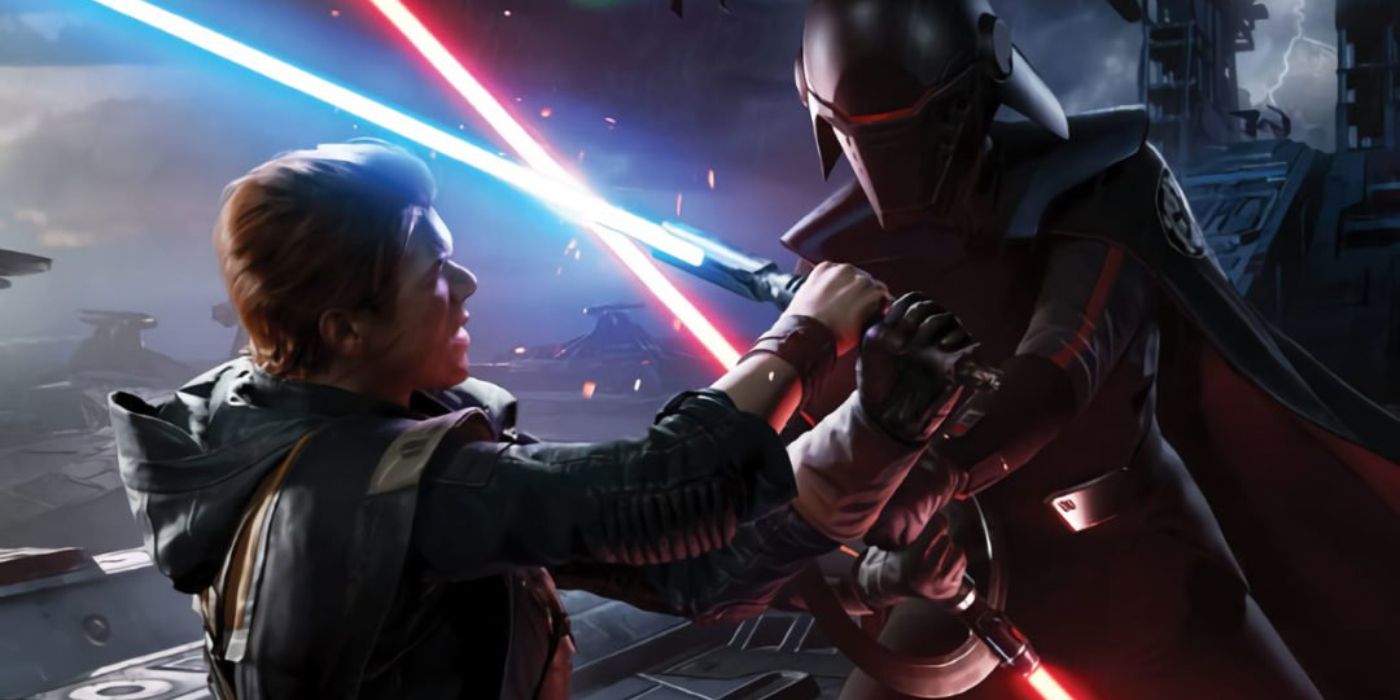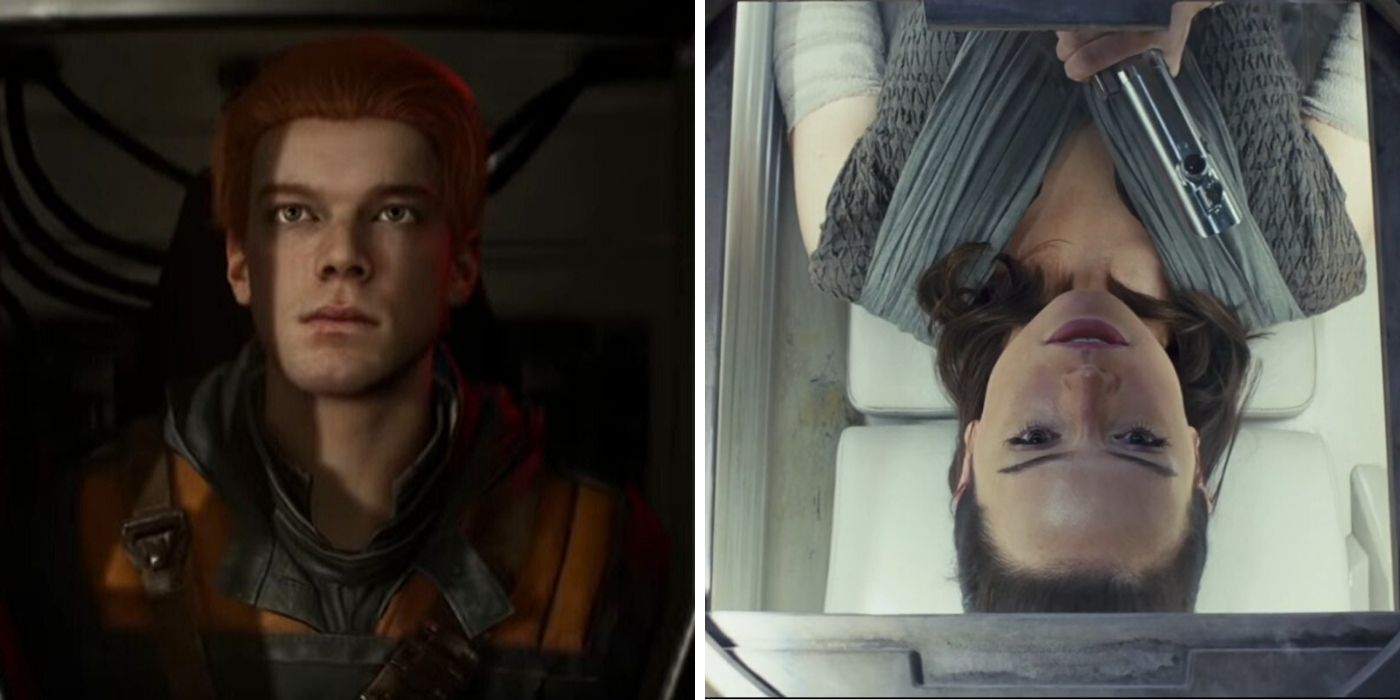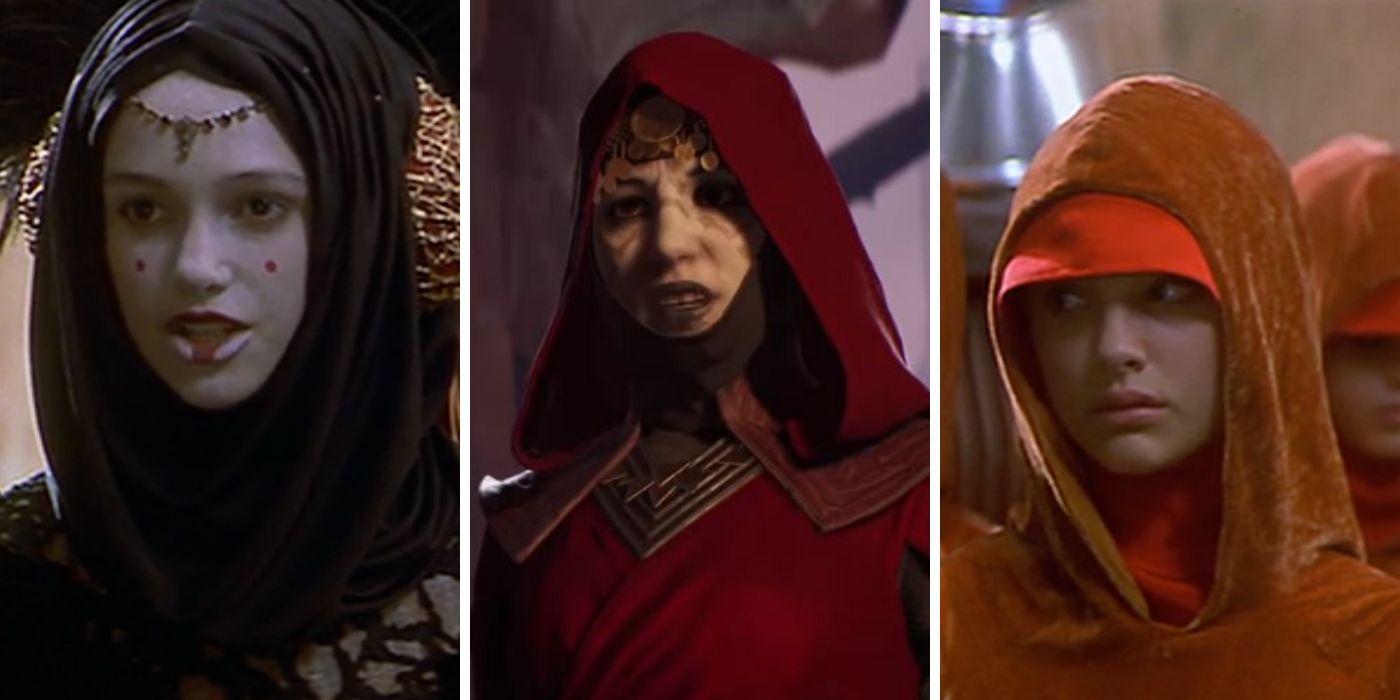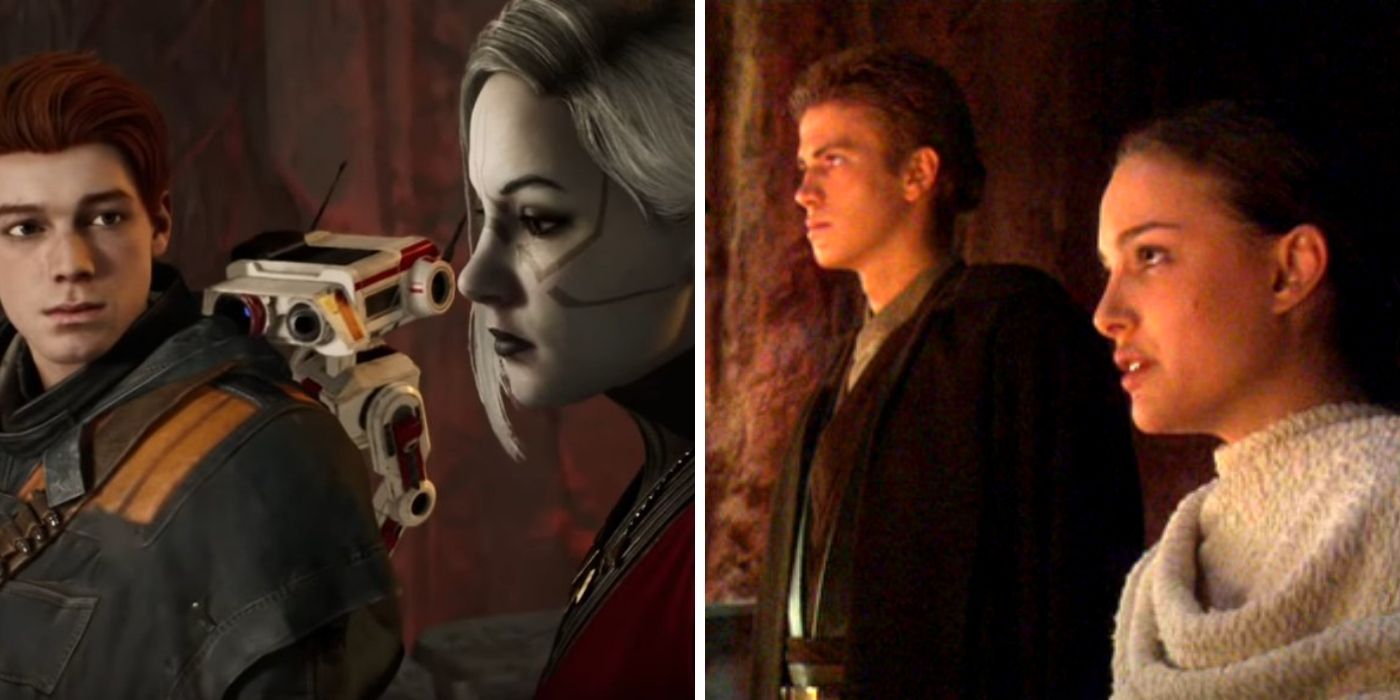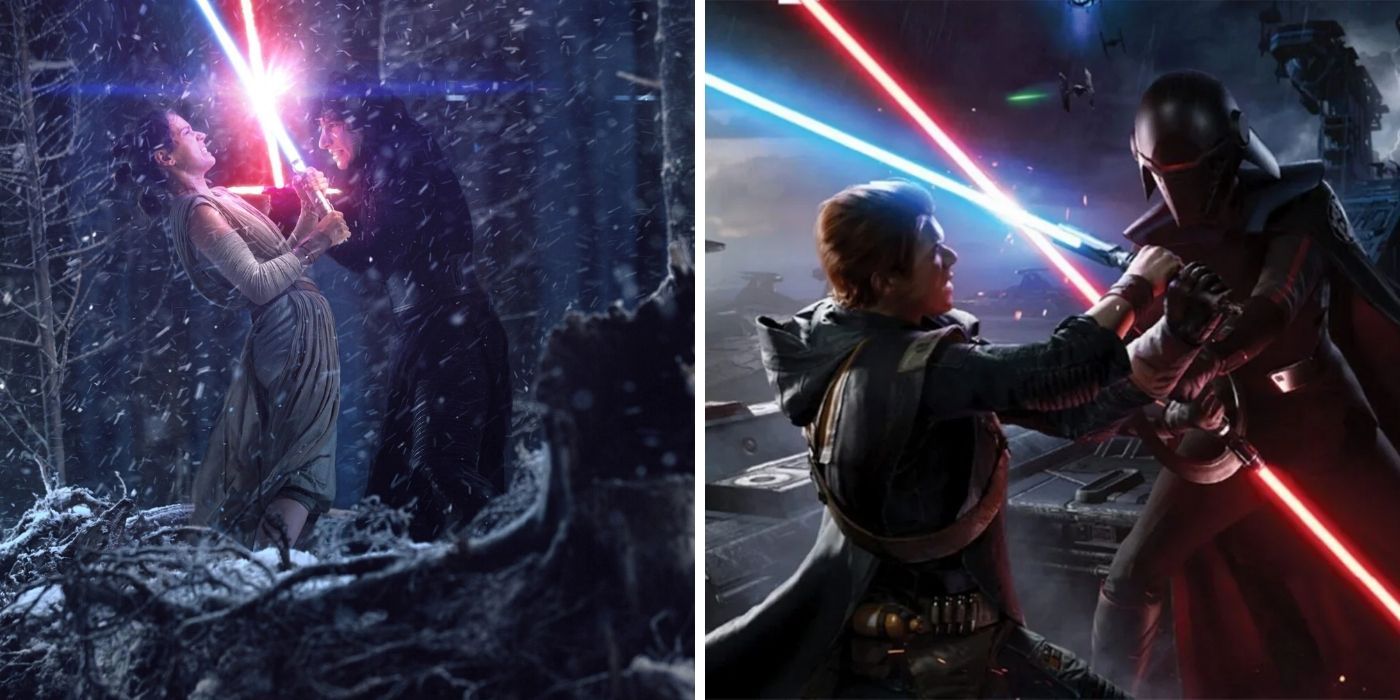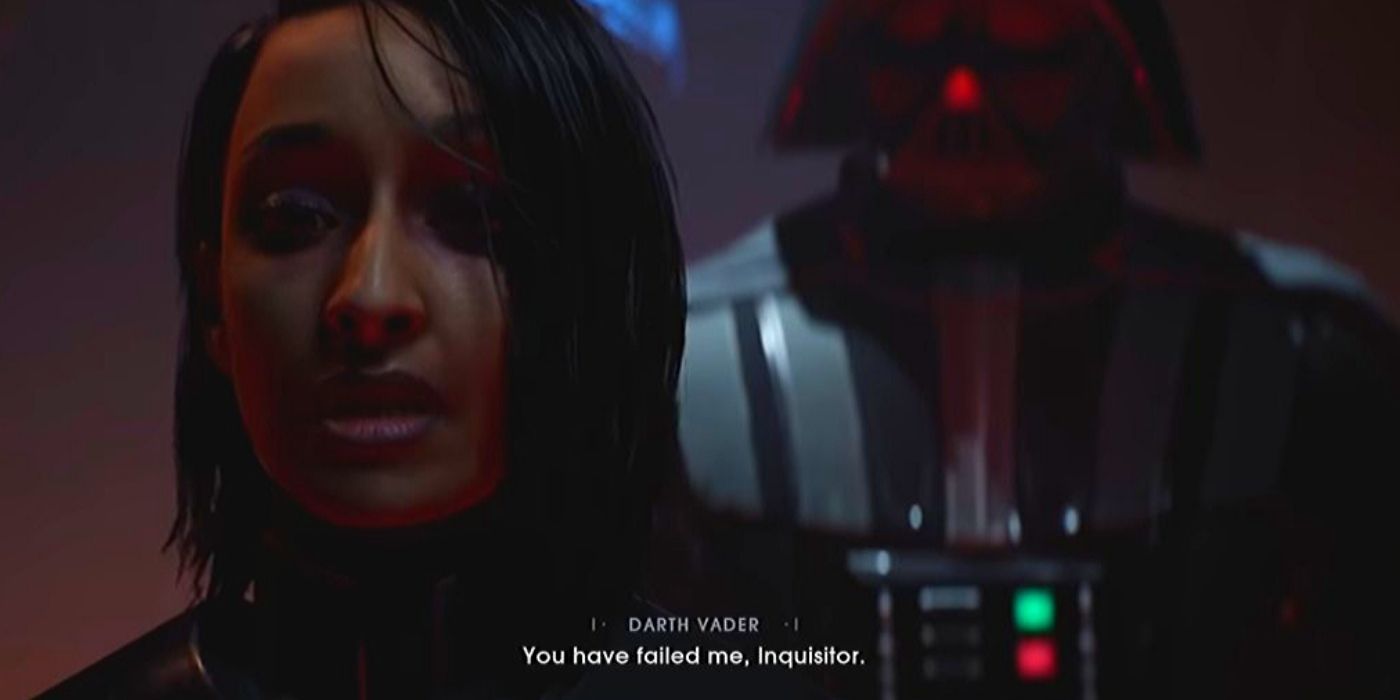WARNING: The following contains for Star Wars Jedi: Fallen Order, available now for Windows, PlayStation 4 and Xbox One.
In Star Wars Jedi: Fallen Order, released last week by Respawn Entertainment and Electronic Arts, the player takes control of Cal Kestis, played by Cameron Monaghan, a former padawan who has been hiding on the junkyard planet of Bracca for 10 years. The story kicks off when the Second Sister, an Inquisitor, detects Cal’s presence and he has to flee with the crew of the Mantis, learning to become a full-fledged Jedi Knight as he tries to beat the Empire to a Jedi Holocron that holds the names of every Force-sensitive child born in the galaxy. His quest will take him to many planets, including Dathomir (Darth Maul’s home world), where he will meet Merrin (Tina Ivlev), an extremely hostile Nightsister who holds the key to the precious Holocron.
The game overflows with frame-by-frame and line-by-line parallels and callbacks to the rest of the saga, although the heart of the story seems to turn around personal relationships: with Rey and Kylo, Anakin and Padmé, and Obi-wan and Luke and Anakin. There’s even a sneaky reference to the greatest bromance of all: the crew of the Millennium Falcon in the Original Trilogy.
Let’s take a look at Cal Kestis, who is basically Rey as a man. Just like Rey, he's a scavenger who finds a cute droid with important information that can lead him to the future of the Jedi. Just like Rey, he has repressed his powers and his memories about his childhood. Just like Rey, he establishes a master-apprentice relationship with a Jedi who has cut herself off from the Force. And, just like Rey, Cal is alternatively pursued and attacked by powerful dark Force wielders under the influence of even darker overlords.
During the game, Cal’s scenes mirror Rey’s to such a point that it could form the basis of a decent drinking game. We see him working as a scavenger in massive ships, fixing an adorable droid that behaves more like a dog than a robot, falling into a cave, trying to get into circular, algae-covered manholes, having Force visions in front of cracked mirrors, seeing himself as Dark!Cal (and if you have chosen a double-edged lightsaber as your weapon, with the same saber staffs as Dark!Rey!), appealing the lights within his opposite-gender enemies, encouraging them to turn, and shipping himself to enemy territory in a coffin-like escape pod.
He shares one very Oedipal trope with Kylo, though (and to a certain degree, with Luke, and with Anakin): He confronts a vision of his dead Jedi master, agonizingly killing him with a lightsaber through the chest. Only in this version, it was an essential step to let go of the memory of his dead master and to get over his survivor’s guilt, which after Order 66 debilitated him to the point of plunging voluntarily into a mediocre life of obscurity (another parallel with Rey at the beginning of The Force Awakens).
Then there’s the Reylo of it all: Trilla (Elizabeth Grullon), aka the Second Sister, not only looks like Adam Driver’s long-lost cousin, but her rage is even greater than his. Trilla is absolutely furious 95 percent of the time, and her anger is born from the same pain point as Cal’s and Kylo’s: the outcome of Order 66, when she thought that her master, Cere (Debra Wilson), who incidentally is Cal’s new master, had abandoned her and the youngling in her care.
Just like Ben Solo the night the Jedi temple burned, after feeling abandoned, Trilla fell into the hands of the Empire, who tortured her until she became a tool to hunt her kin: an Inquisitor. Cere, her Jedi master and Cal’s new teacher, abandoned her a second time when she saw what Trilla had become, and on this occasion, she left her for dead. Trilla’s red-eyed rage at Cere is entirely understandable, as is her concern about her Cere’s ability to train and protect another group of Force-sensitive children – or even a grown-up fledgling like Cal.
Trilla’s more-than-professional interest in capturing Cal is not discreet: even her colleague, the Ninth Sister (from Marvel's Darth Vader: Dark Lord of the Sith) comments on it, much in the way Hux is perplexed at Kylo Ren’s behavior when he captures Rey instead of the droid in The Force Awakens.
There’s even a Force bond-style banter dialogue for an entire level after Trilla slices the communication lines between the Mantis and Cal that mirrors Rey’s and Kylo’s dialogue in The Last Jedi. We see much less of Trilla than we see of Kylo, and that’s because Star Wars Jedi: Fallen Order has another set of Jogan fruits in the air: a retelling of Anakin and Padmé’s story, but this time with a relatively happy ending.
It's on Dathomir where Cal meets Merrin, the other dark feminine character. She’s the last Nightsister in the galaxy (at least to her knowledge), the heiress to a tremendously powerful line of Force-wielders whose power is intimately linked with the ground they tread, illusions, manipulation and other “dark magics.” If this Force skillset sounds like politics to you, it’s because it is. Fans of the prequel trilogy will remember how Obi-Wan referred to politicians in similar terms, although most of the Galactic Senate was not able to raise the dead from their tombs as Merrin does.
The developers didn’t strive for Merrin’s resemblance to Natalie Portman, but they made sure to dress her in conservative red clothing, complete with a very handmaiden-looking hood, and her pale skin with the striking lines and dark lips does look like Naboo’s funerary make-up. To drive the point home, Merrin mourns and invokes her dead sisters, who fight for their dark mistress, much like Padmé’s handmaidens did for her. And just like Padmé, Merrin has fallen under the affably evil influence of a male hooded figure, who has blinded the only kin she has left, the Nightbrothers, to his true nature, much like Palpatine blinded the Jedi Order and co-opted Padmé’s political power in The Phantom Menace.
The name of this Jedi gone dark, who is arguably the real villain of the game, is Malicos – and he fits the archetype of dark, manipulative wizard much batter than anyone else. He covets Merrin’s magicks and has made it his life mission to isolate her from the larger events taking place in the Galaxy. By the time that Cal shows up, and despite her fantastic power born from grief, Merrin is entirely under Malicos’ influence.
However, in Jedi: Fallen Order, the Anakin-Padmé story is already trying. First of all, Malicos’ offer to Cal to join him to create “something new, something better,” is summarily refused. That causes Merrin to realize how much he has fooled her, and to call upon the power of her ancestors (zombie Nightsisters that look like murderous fairies) and the earth itself to defeat and bury Malicos alive.
Merrin then helps Calto find the key to the Holocron that contains the names of all the Force-sensitive children – instead of dying in childbirth and losing her Force-sensitive twins to obscurity. This list probably included Luke, Leia, Ezra from Rebels (who was born only one day before the Skywalker twins), and "the Asset" from The Mandalorian, which is a nice touch.
Merrin becomes, in a way, the mother of these children, and the visual language of the scene confirms her in that role. While there’s no romance, she’s the only character to whom Cal gives his lightsaber, followed by the precious key, signaling that he trusts her more than anyone else in the entire game.
During the game’s climax, which takes place within a partially submerged Fortress with a pit of lava (both a reference to Naboo and Fortress Vader on Mustafar). This final boss fight, which pitches Cal against Trilla, and then Cere against Trilla, and the Cere and Cal against Darth Vader, is spectacular but ends in tragedy: Vader, sensing Trilla’s pull to the light side, unceremoniously kills her.
Another neat reversal happens at the end. Cere, Cal and Trilla’s mentor, who had been closing herself off from the Force (just like Luke) because she was terrified of falling into the dark side again, finally embraces that aspect, wields Trilla’s lightsaber and charges at Darth Vader with a single mission: to protect, at any cost, the Force-sensitive babies from the Empire. This is an epic reversal of the usual Jedi attitude of “laissez-faire” and also a fantastic mama-bear moment where Cere’s power brings Vader to his knees. By embracing her rage at the best possible moment, Cere succeeds where the Jedi council (and, most notably, Obi-wan) had failed.
After spending the entire game setting up parallels, the final level and cutscenes of Jedi: Fallen Order seem intent in offering the player a different end than the one they know: Instead of trying to slay his master in the lava, Cal tries to save Cere from drowning in the lake. Merrin, unlike knocked-out Padmé in Mustafar, jumps into the water and saves them both. We do not see Merrin swimming on Dathomir, so her diving is a clear reference to Padmé’s favorite activity – swimming in the lakes of Naboo, and in the scene, Merrin looks like an angel pulling up shadows from the Styx.
So, if the game is trying to be hopeful, why does Trilla die? If Jedi: Fallen Order is so rife with Reylo foreshadowing, shouldn’t she have a happy ending?
The answer is, “That’s not how the Force works.” Jedi: Fallen Order is set in the aftermath of two taboo transgressions: Palpatine’s absorption of all the power in the Galaxy, including the feminine, and Anakin’s horrific fall to the dark side and his slaughtering of the younglings. While Merrin’s arc is a step forward towards regaining that stolen power, Trilla does go further down the path of redemption than Anakin or Vader ever did. Before she dies, she does reconcile with her Cere and agrees to join Cal in his quest, something that Anakin never did. Anakin was swallowed by the pull to the dark, and Trilla breaks free from it for a brief moment.
Star Wars is one story told in iterative ring-structure that is constantly trying to mend itself. And as the saying goes, third time’s the charm: Trilla's tragic death right after her redemption all but guarantees that we’ll be seeing Ben Solo rise from the pit of the dark side and live to tell the story in The Rise of Skywalker. And after that? Well, the endgame teases us with the most exciting story of all: an entire Galaxy in Balance, ready to be explored.

